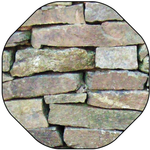- Home
- Acrobat
- Discussions
- Re: Very thin lines do not print correctly
- Re: Very thin lines do not print correctly
Very thin lines do not print correctly
Copy link to clipboard
Copied
I got a subscription to Acrobat because of the ability to print PDFs across multiple pages but it is not printing my very fine lines correctly. I am using very fine lines in my drawing and when printed they are all wrong. To see what was going wrong I made a test image of concentric rectangles whose line thickness is getting gradually thinner. It prints OK in Sumatra PDF and if I rasterise the image to 600dpi but Acrobat just prints a black mess. I have spent days trying wvarious printer and viewer settings and searching the internet but I cannot find a solution.
As you can see, the very thin lines are printing as a thick blackness but only with Acrobat.
Copy link to clipboard
Copied
I added a title to each image but they don't seem to have shown up. The first image is a photo of an Acrobat printout. The second is of a Sumatra prinout. The third is a rasterised PNG printout and the fourth is a screen shot of the image in Acrobat.
This image is a photo of all three printouts together.
Copy link to clipboard
Copied
Another testfile shows that below a certain thickness the lines actually print thicker than a thicker line. I have set Fix Hairlines threshold in print preproduction to 0 (zero pt) but it seems to ignore that below a certain thickness.
Copy link to clipboard
Copied
What is the version of the Acrobat DC you are using? To check the version go to Help > About Acrobat and make sure you have the recent version 23.08.2042X installed. Go to Help > Check for updates and reboot the computer once.
Also try to print the PDF as an image. Open the PDF > Go to Print > Advanced > Print as image and see if that works.
You may also go through the help page https://helpx.adobe.com/acrobat/kb/troubleshoot-pdf-printing-acrobat-reader.html and see if that helps.
~Amal
Copy link to clipboard
Copied
Adobe Acrobat Pro. 2023.008.20421
Print as image has the same fault, the lines get thinner up to a point and then they get a little thicker and stay at that thickness. . Is there a way I can attach the very simple test file. I am pretty sure that you can reproduce this behaviour as I believe it is a fundamental flaw.
Copy the SVG text below to a HTML file and convert to PDF and you will see the prob;lem:
<?xml version="1.0" encoding="utf-8" standalone="no"?>
<!DOCTYPE svg PUBLIC "-//W3C//DTD SVG 1.1//EN" "http://www.w3.org/Graphics/SVG/1.1/DTD/svg11.dtd">
<svg preserveAspectRatio="xMinYMin meet" width=" 20.00cm" height=" 20.00cm" viewBox=" 0.00 0.00 5120.00 5120.00" version="1.1" xmlns="http://www.w3.org/2000/svg" xmlns:xlink="http://www.w3.org/1999/xlink">
<desc>SVG file compiled by Matlab functions samefigsvg.m/patchsvg.m written by Michael McLaughlin</desc>
<g id="topgroup">
<g id ="ID000000">
<g>
<polygon fill="none" stroke="#000000" stroke-width="40.00" stroke-opacity="1" points="600,1300 900,1000 4200,3700 3900,4000 600,1300" />
<polygon fill="none" stroke="#000000" stroke-width="28.28" stroke-opacity="1" points="600,1400 1000,1000 4200,3600 3800,4000 600,1400" />
<polygon fill="none" stroke="#000000" stroke-width="20.00" stroke-opacity="1" points="600,1500 1100,1000 4200,3500 3700,4000 600,1500" />
<polygon fill="none" stroke="#000000" stroke-width="14.14" stroke-opacity="1" points="600,1600 1200,1000 4200,3400 3600,4000 600,1600" />
<polygon fill="none" stroke="#000000" stroke-width="10.00" stroke-opacity="1" points="600,1700 1300,1000 4200,3300 3500,4000 600,1700" />
<polygon fill="none" stroke="#000000" stroke-width="07.07" stroke-opacity="1" points="600,1800 1400,1000 4200,3200 3400,4000 600,1800" />
<polygon fill="none" stroke="#000000" stroke-width="05.00" stroke-opacity="1" points="600,1900 1500,1000 4200,3100 3300,4000 600,1900" />
<polygon fill="none" stroke="#000000" stroke-width="03.54" stroke-opacity="1" points="600,2000 1600,1000 4200,3000 3200,4000 600,2000" />
<polygon fill="none" stroke="#000000" stroke-width="02.50" stroke-opacity="1" points="600,2100 1700,1000 4200,2900 3100,4000 600,2100" />
<polygon fill="none" stroke="#000000" stroke-width="01.77" stroke-opacity="1" points="600,2200 1800,1000 4200,2800 3000,4000 600,2200" />
<polygon fill="none" stroke="#000000" stroke-width="01.25" stroke-opacity="1" points="600,2300 1900,1000 4200,2700 2900,4000 600,2300" />
<polygon fill="none" stroke="#000000" stroke-width="00.88" stroke-opacity="1" points="600,2400 2000,1000 4200,2600 2800,4000 600,2400" />
<polygon fill="none" stroke="#000000" stroke-width="00.62" stroke-opacity="1" points="600,2500 2100,1000 4200,2500 2700,4000 600,2500" />
<polygon fill="none" stroke="#000000" stroke-width="00.44" stroke-opacity="1" points="600,2600 2200,1000 4200,2400 2600,4000 600,2600" />
<polygon fill="none" stroke="#000000" stroke-width="00.31" stroke-opacity="1" points="600,2700 2300,1000 4200,2300 2500,4000 600,2700" />
<polygon fill="none" stroke="#000000" stroke-width="00.22" stroke-opacity="1" points="600,2800 2400,1000 4200,2200 2400,4000 600,2800" />
</g>
</g>
</g>
</svg>
Copy link to clipboard
Copied
Hi there,
Please check for any missing/pending updates for the printer driver and firmware and try updating it and check.
You may also try to remove the printer driver/firmware and reboot the computer once and reinstall it from the manufacturer's website and see if that helps.
Also, please try to collect the printer logs as described in the help page https://helpx.adobe.com/acrobat/kb/collect-print-logs-for-acrobat.html and share them for further investigation.
~Amal
Copy link to clipboard
Copied
Hi Amal,
As I said, I think this will be a problem for anyone. I tried it on my work computer using Acrobat Reader instead of Acrobat Pro and printing to a PDF with Microsoft Print to PDF with the same result. Sumatra gives a perfect print and Acrobat makes the lines thicker when the thickness goes below 25/1000 ths of an inch.
Have you tried printing my test file to see if you also have the problem? I think you will find that you do. In fact I will put my money where my mouth is. I will personally give you €100 if you do not have the exact same bug in your version of Acrobat.
Michael
Copy link to clipboard
Copied
Try turning off the Acrobat page display preference to "enhance thin lines", although I believe this should only affect page display. If this helps, you could use the flattener preview to convert all strokes (lines) to outlines (shapes) which might print correctly regardless of Acrobat preference.
You can attach your pdf to your post by clicking on this button:
Copy link to clipboard
Copied
Thanks.
Yes I found that "enhance thin lines" setting already. As you say it doesn't affect the printout. Attached is a test PDF file with 25 lines decreasing from 6.7 thousandths of an inch to 1.9 thousandths of an inch. When it gets below 2.5 thousandths it jumps up again to about 7 thousandths in the printout. Even printing to a file using Microsoft Print to PDF.
Copy link to clipboard
Copied
On my Epson inkjet I could only see a difference in the first 6 or 7 lines on your sample pdf and the other lines all look the same size, when printed as an image, using 1200 dpi, the lines appeared to shrink from top to bottom, but the smallest lines were composed of broken lines. I suspect Sumatra is converting your pdf to an image before printing, where Acrobat is trying to image the very small vector lines, causing them to appear thicker. A lighter line will appear thinner to the eye, so you might consider changing the color of your lines below .25pt.
If this project is ultimately going to a commercial printer, you should discuss your concerns with them, as some print methods can reproduce very thin lines better than others, generally anything smaller than .25 pt (.0035") can be a problem.
Copy link to clipboard
Copied
Hi @Amal.
So have you confirmed it's definitely a bug in Acrobat?
Is there a bug log or something where I can report it or will you handle that?
Michael
Copy link to clipboard
Copied
Please collect the printer logs as described in the help page https://helpx.adobe.com/acrobat/kb/collect-print-logs-for-acrobat.html and share them for further investigation so we can isolate the issue for the fix.
~Amal
Copy link to clipboard
Copied
You're comparing apples to oranges here in terms of the printing technology.
When you print from Acrobat, the object instructions (postscript code) that define the lines are converted to a raster for your particular printer. e.g. if you're printing to a typical 600dpi printer, the smallest line that can be printed can be no thinner than 1 pixel. One pixel on a 600 dpi printer is equivalent to 0.12 pt stroke. Any line you send that's thinner than that will print at 0.12 pt. So if you have a bunch of them very close to each other like in your sample file, it will easily clump up like that. And depending on how this falls on the printer's fixed raster grid, it can very well cause lines next to each other to be double (2 pixels) thick. There is a routine in Postscript printers that will try and reposition very thin lines so this effect is minimal, but it cannot prevent it, and, this is only on PS printers. Non-PS printers like a typical PCL laser writer does things differently, as do Inkjets using scatter dot technology
Your other two samples are doing things differently... Both of these have converted your thin lines to an image raster that is essentially greyscaling/dithering your lines. There are no actual solid 100% black "lines" at that size. This is also how a scatterdot printer will do it, and if you look at your printed sample, you can see, close-up, it's all random dots.
Now, if you're printing to a high-res imagesetter at a commercial printer with a resolution upwards of 2400 dpi or more, you can produce finer lines. However, conversely, if you print to a 300 dpi printer, it will get worse (minimum .24 pt).
btw: the Enhance Thin Lines is purely a display setting. It does not affect print at all..
Copy link to clipboard
Copied
Hi, I have a similar problem. It is certainly Adobe. I have a PDF created in AutoCAD, and it prints great from Bluebeam Revu.
However, when printed from Adobe, it misses random thin lines.
Any suggestions?
Copy link to clipboard
Copied
None of the suggestions I was given worked so I gave up and I use Sumatra
PDF to print now.
Michael McLaughlin,
[P.I Removed by Moderator]
Copy link to clipboard
Copied
Unfortunately, my clients mainly use Adobe; as a Revu user, I had never had this issue until it was pointed out. I now make lines thicker to combat this issue
Find more inspiration, events, and resources on the new Adobe Community
Explore Now











